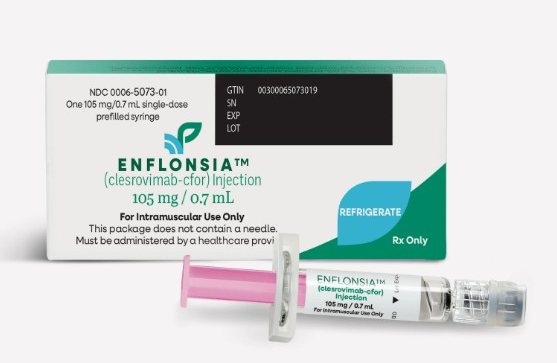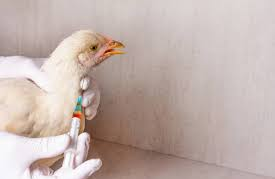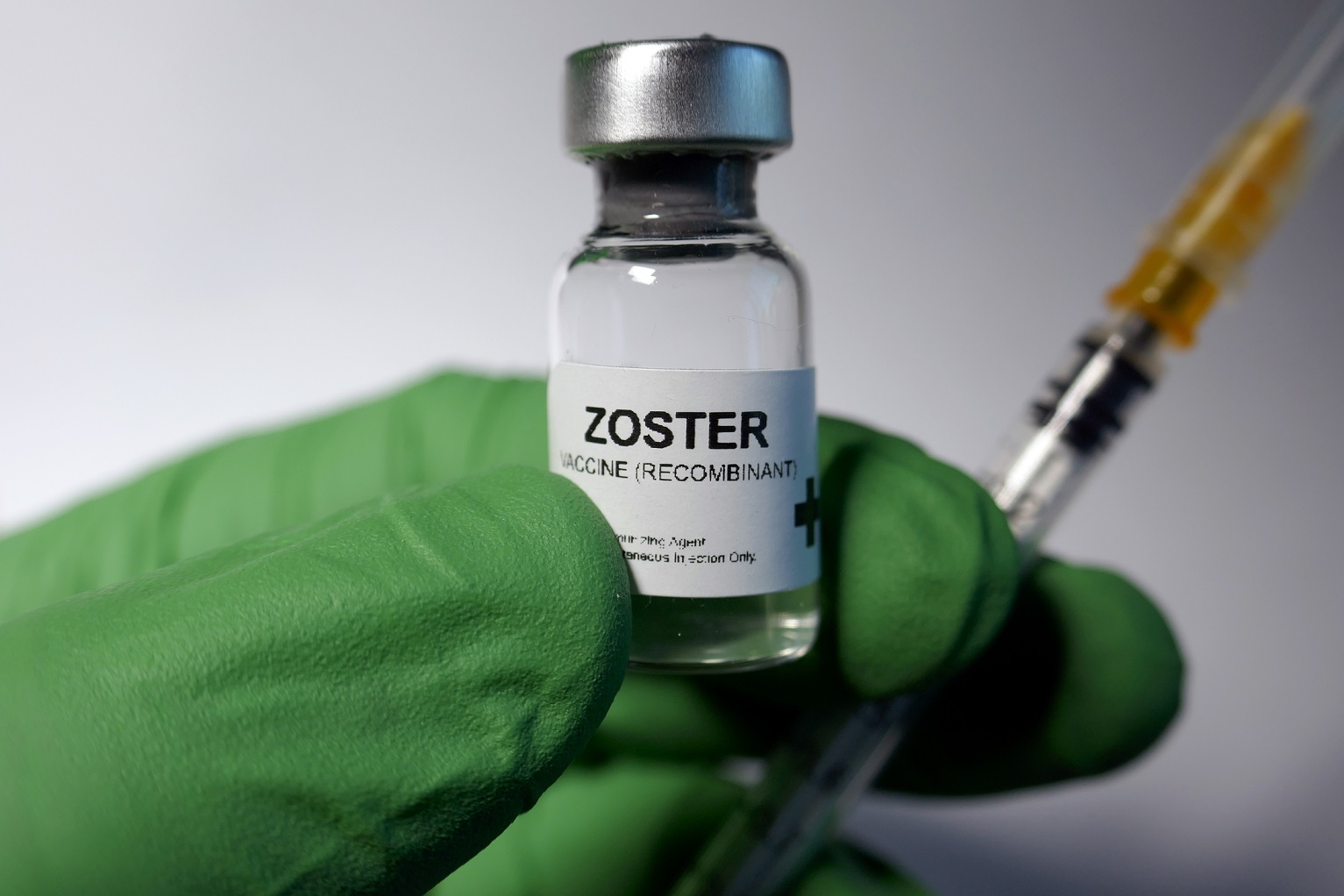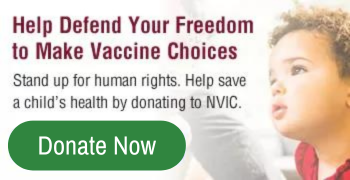When it comes to cozy business relationships between government and industry, there is nothing like the lucrative one that Congress has encouraged federal health agencies to create with the drug and vaccine industry. One hand washes the other.
Have you ever wondered how some new drugs and vaccines vault to the front of the line of the FDA’s licensing process using fast track approvals? One way is through a federal law, the Food and Drug Administration Amendments Act passed by Congress in 2007, which allows a company developing a treatment for a neglected or rare pediatric disease to pay the FDA for a priority review voucher (PRV). Although FDA approval is not guaranteed, most of the time a PRV secures fast track approval in six rather than 10 months.1 2
According to the FDA, to earn a priority review designation, a pharmaceutical product must pose “significant improvements in the safety or effectiveness of the treatment, diagnosis, or prevention of serious conditions when compared to standard applications.” The company seeking approval must also provide “evidence of safety and effectiveness in a new subpopulation.”3
The PRV was created and included in the 2007 law to provide an incentive to companies developing non-profitable drugs for rare pediatric diseases, but has proved to be a windfall for companies producing vaccines.
Selling PRVs to Get Jump on Securing Market Share
Under the law, drug companies developing treatments for neglected and rare pediatric diseases may sell the PRVs they have purchased from the FDA to other companies, including vaccine manufacturers, for millions of dollars to fast track the licensure of completely different, profitable drugs and vaccines. When sold, the PRVs designed to help small companies fund their development of non-profitable disease treatments can give extreme advantages to multi-national corporations developing and selling other high priced drugs and vaccines.
“If you develop a new drug for malaria, your profitable cholesterol-lowering drug could go on the market a year earlier,” said Bill Gates at the World Economic Forum in Davos in 2008. Describing the 2007 law creating PRVs, Gates pointed out that, “This priority review could be worth hundreds of millions of dollars.”4 The Bill and Melinda Gates Foundation has invested hundreds of millions of dollars in the vaccine industry.5
Early PRV approval from the FDA gives drug companies several months of additional sales because the first licensed drug or vaccine in a category to reach the market often becomes the front-runner, leaving competitors in the dust. For example, Regeneron and Sanofi bought a PRV in the hopes that its cholesterol drug Praluent would beat Amgen’s Repatha to market.6 Gilead paid $125 million for a PRV and AbbVie paid $350 million, in addition to the $2,706,000 paid to the FDA for the shortened review.7
As Gates pointed out, companies that purchase PRVs stand to make millions on pharmaceutical products that the FDA fast tracks to market. PRVs, then, appear to be primarily making money for drug companies rather than truly helping patients suffering with rare and neglected diseases.
Congress Gives Pharma Edge Over FDA Regulators
The FDA is charged with the legal duty to regulate the food and pharmaceutical industries to ensure that prescription drugs, vaccines and other biological products, medical devices, and certain types of foods are safe, labeled properly and effective before being released for use by the public.8 Reportedly, FDA officials objected to the priority review program, which was included in the 2007 law passed by Congress without soliciting input from FDA staff.9 According to an unnamed FDA source, “FDA does not get a true seat at the table” during the legislative process so “well-meaning academics, advocates, and legislators ‘sold’ FDA to the highest bidder in setting up this program.”10
Critics of the PRV program point out that it does not really encourage drug development for rare diseases. Since medical reviewers in FDA cannot be easily moved from one review division to another in order to handle PRVs, it creates added workload strain to an overtaxed regulatory agency that is understaffed. The program also makes it easier for pharmaceutical products, for which there are existing treatments, such as for diabetes or cholesterol, to move to the front of the approval line at the expense of other, more important ones for which there are no treatments.
For example, Janssen used a PRV to accelerate the approval of Tremfya (guselkumab) to treat plaque psoriasis, a lucrative drug category competing with the best-selling psoriasis drug, Humira.11 Drug giants Gilead Sciences and Jazz Therapeutics have also bought PRVs.
Prescription Drug User Fee Act Paves Way for PRVs
Of course not all of the accelerated FDA reviews that big drug companies are enjoying involve priority review vouchers created under the 2007 law. In 1992, Congress passed the Prescription Drug User Fee Act (PDUFA) to accelerate FDA licensing approvals of new drugs and vaccines.12 It was the first law to allow pharmaceutical companies to pay the FDA to let them by-pass normal licensing procedures so they could fast track new products to market. The Act was reauthorized by Congress as PDUFA VI in the Food and Drug Administration Reauthorization Act of 2017 (PL 115-52).13
More than half of the FDA’s budget is now funded by the pharmaceutical industry through PDUFA fees.14 This raises serious questions about the integrity of the FDA licensing process when Congress has allowed drug companies to, in effect, bribe the FDA to lower licensing standards in order to grease the skids for certain drugs and vaccines to be fast tracked to licensure.15
Gardasil Vaccine’s Fast Track Licensing Under PDUFA
Recently, the FDA granted Priority Review to Merck’s new Supplemental Biologics License Application (sBLA) for Gardasil 9 vaccine under PDUFA. In a June 13, 2018 press release, Merck stated that the FDA has set a PDUFA, or target action, date of Oct. 6, 2018 for a decision about whether Merck will be granted “an expanded age indication for Gardasil 9 for use in women and men ages 27 to 45 to prevent certain cancers and diseases caused by the nine human papillomavirus (HPV) types covered by the vaccine.”16
Dr. Alain Luxembourg, a Merck official said, “Women and men ages 27 to 45 continue to be at risk for acquiring HPV, which can lead to cervical cancer and certain other HPV-related cancers and diseases. We look forward to working with the FDA on the review of this application for GARDASIL 9, which, if approved, would enable more people to have access to the vaccine.”
Serious reactions to Gardasil (and Cervarix, another HPV vaccine), including autoimmunity, brain dysfunction and infertility, have been reported in the U.S. and countries around the world and are documented in the medical literature.17 18 19 20 21 As of July 2018, there have been more than 57,000 HPV vaccine adverse events reported to the federal Vaccine Adverse Event Reporting System (VAERS) since 2006, including more than 15,000 emergency room visits, 5,600 hospitalizations and 358 deaths. Reported reactions include syncope (sudden loss of consciousness), Guillain Barre Syndrome (GBS), seizures, acute disseminated encephalomyelitis (ADEM), rheumatoid arthritis, lupus, thyroid disorders, deep vein thrombosis and blood clots, pancreatitis, postural orthostatic tachycardia syndrome (POTS), disabling fatigue, muscle and joint pain, memory loss and speech problems.22
In June 2006, the National Vaccine Information Center (NVIC) publicly criticized the FDA for fast tracking Gardasil to licensure before it had been fully evaluated for serious side effects and recommended for all 11-12 year old girls by the Centers for Disease Control (CDC).23 24 Merck’s pre-licensure clinical trials used an aluminum containing “placebo,” even though aluminum is an ingredient in Gardasil and can cause inflammation and nerve cell death.25
The next year, Congress passed the PRV legislation reinforcing and expanding the fast track licensing process.
Expanding Gardasil’s Market With Taxpayer Money
Merck is now the sole source manufacturer of HPV vaccine in the U.S.,26 although the well-known reactivity of HPV vaccine, together with its questionable effectiveness, has resulted in low vaccine uptake because of a reluctance by parents to give the vaccine to their children.27 28 There have been Gardasil vaccine injury lawsuits in Japan and France.29 30 In 2016, judges in India’s Supreme Court demanded answers after children died during a trial of Gardasil and Cervarix vaccines.31
In July 2018, the British Medical Journal published an indictment of a May 2018 Cochrane Collaboration clinical trial review of HPV vaccines that came to the conclusion that HPV vaccines “do not increase the risk of serious adverse events, miscarriage or pregnancy termination.”32> A trio of well-credentialed epidemiologists authored the BMJ critique, detailing how the Cochrane group in charge of the review cherry picked 26 randomized clinical trials – all funded by vaccine manufacturers – to include in the review.33 Charging that the Cochrane review could not be considered “Trusted evidence” because it was influenced by reporting bias and biased trial designs, they pointed out that Cochrane used the biased review to publicly pronounce that HPV vaccine “causes no serious side effects,” even though the published review incompletely assessed serious and systemic HPV vaccine adverse events and failed to assess vaccine-related safety signals.34
The muddy record of HPV vaccine safety and parental resistance is clear and federal health officials are planning to use taxpayer money to launch a stepped up nationwide HPV vaccine promotion campaign in the U.S.35 At the same time, Merck is still determined to get its money’s worth by selling Gardasil in other countries, like Australia and China.36 37
The recent request to FDA to fast track an expanded use license for Gardasil is not Merck’s first attempt to enlarge the patient pool and market for its lucrative HPV vaccine. After a priority review in 2008, the FDA rejected the company’s application for Gardasil approval in females aged 27 to 45 years. But Merck is nothing if not persistent.38
A dose of Gardasil costs between $168 and $205 in the U.S.39 Like many drugs that enrich the drug industry due to high prices, much of Gardasil’s development was funded by the U.S. government and taxpayers, and the vaccine continues to receive taxpayer funding.40 41
In 2013, the NIH gave half a million dollars to the University of Texas SW Medical Center Dallas to try to “identify an optimal and feasible self-persuasion intervention strategy to promote adolescent HPV vaccination in safety-net clinics” also known as sell more vaccines.42 Nor was that the only marketing grant.
The University of Texas El Paso received $422,716 from the NIH to do similar free marketing and “pilot test a future intervention to promote adoption of the HPV vaccine in the Latino community” while “considering cultural factors.”43 In 2013/2014, Yale University received $390,389 from the NIH to “identify and describe barriers to HPV vaccination completion among lower income racial and ethnic minorities” and “generate ideas for future interventions that will be culturally relevant and have the greatest potential for impact.”44
In 2017 and 2018, NIH (National Cancer Institute) awarded Vanderbilt University Medical Center a total of $1,173,628 to fund a study project entitled “Increasing HPV Vaccine Uptake in Community-Based Pediatric Practices” for the purpose of identifying “the optimal approach to implementing an evidence-based intervention for the uptake and completion of HPV vaccine among adolescents receiving care in the community, guided by implementation science theory.” In plain language it means that the NIH grant is being given to a Vanderbilt researcher to develop strategies to sell more Gardasil vaccine. The problem, according to the grant is, “despite clear and indisputable value in cancer prevention, uptake and completion of the HPV vaccine series has lagged far behind the goal of 80%.”45
NIH Grants to Universities to Create Ways to Sell More Vaccines
The federal government helping the drug industry to market more vaccines is not limited to Gardasil and HPV vaccines. Another grant, this one to Emory University for $767,107 for fiscal year 2017, targets pregnant women and their children for vaccination using sophisticated sales and marketing techniques.
The Emory grant reads, “Overall, the proportion of children not receiving all recommended vaccines or whose parents are consistently limiting visit-level vaccine administration is increasing… Additionally, despite evidence showing the effect of vaccinating pregnant women in reducing disease among infants too young to be fully vaccinated, maternal immunization rates remain low.”46 Grantees at Emory will explore how to sell more vaccines by using “vaccine champions, expanded reminder-recall systems,” “standardized talking points” and “interactive tablet computer (iPad) education application for pregnant women to view while waiting for care.”
Vaccine hesitancy and refusal is being addressed with a 5-year NIH grant for $1.7 million to Georgetown University researchers working with researchers from University of Georgia, Pennsylvania State and Emory University “to identify areas of the country where vaccine refusal is on the rise.” A Georgetown University press release announcing the NIH grant in November 2017, stated, “With anti-vaccine activists growing in number and influence in recent years, public health professionals have become increasingly interested in identifying where and why people refuse vaccines and how this behavior drives the spread of vaccine-preventable disease.”47
Although the CDC tracks rates of vaccine refusal at the state level, the grant will be used to utilize datasets that can track vaccine refusal at the ZIP code level. Georgetown’s lead researcher on the grant commented, “While there is previous work on what motivates individuals to engage in vaccine hesitancy, we don’t know much about the populations that tend to have higher rates of this behavior. But public health policy is made at the population-level. And our work will help us understand how to design and target effective population-level policies.”
NIH Grant to Study Safety of Childhood Vaccine Schedule
Finally, at least one NIH grant suggests that the federal agency is going to take a look at vaccine safety knowledge gaps associated with the childhood vaccine schedule, which vaccine safety advocates have spoken about for years. Those big gaps in vaccine safety research were highlighted by the Institute of Medicine in a 2013 report, Childhood Immunization Schedule and Safety: Stakeholder Concerns, Scientific Evidence and Future Studies.48 Acknowledging that “a few of the existing studies show that there are cases in which the risk of adverse events depends on the vaccine schedule used,” NIH has awarded a grant of $392,999 to Harvard Pilgrim Health Care, Inc. to evaluate the safety of the federally recommended childhood vaccine schedule and alternative schedules.
Researchers will evaluate “the timing of individual vaccines; the timing between doses of the same vaccine; the interaction effect between vaccines and concurrent health conditions or pharmaceutical medications; the interaction effects of different vaccines given on the same day; the ordering of different vaccines; and the effect of cumulative summary metrics such as the total number of vaccines or the total amount of some vaccine ingredient.”49 The NIH funded project will also cover “study designs for the comparative evaluation of the CDC recommended schedule, popular alternative schedules and completely unvaccinated children. Methods will be developed for both adverse events with an early onset, which are the easiest to study, and for adverse events with a late onset, including serious chronic conditions.”
So, while giving the green light to speedy vaccine approvals and aggressively marketing vaccines that yield big profits for drug companies, public health officials know there are outstanding questions about just how safe government recommended vaccines really are for infants and children being required by law to use them. It will be interesting to see if the design of the study funded by NIH and conducted by Harvard Pilgrim Health Care, Inc. will truly qualify as good science the public can trust or turn out to be just another transparent sales pitch that wastes the taxpayer’s money.
References:
2 Ridley DB, Regnier SA. The Commercial Market for Priority Review Vouchers. Health Affairs 2016; 35(5). (Also see Priority Review Vouchers).
3 FDA. Priority Review. Jan. 4, 2018.
4 Polity. Davos: Gates: Speech on creative capitalism. Jan. 25, 2008.
5 Cáceres M. Gates Foundation Invests in for-Profit Ventures. The Vaccine Reaction Oct.12, 2017.
6 McCully M. What happened to the value of priority review vouchers (PRV)? Locust Walk Mar. 2, 2017.
7 Pagliarulo N. Gilead snaps up Sarepta’s priority review voucher for $125M. Biopharmadive Feb. 21, 2017.
8 FDA. What does the FDA do? July 24, 2018.
9 Silverman E. FDA wants to nix voucher program for rare pediatric disease drugs. Pharmalot/STAT Mar. 3, 2016
10 Ibid.
11 Gaffney A, Mezher M, Brennan Z. Regulatory Explainer: Everything You Need to Know About FDA’s Priority Review Vouchers. Regulatory Focus (RAPS) July 23, 2018.
12 FDA. Prescription Drug User Fee Act (PDUFA). July 23, 2018.
13 Dabrowski A, Thaul S. Prescription Drug User Fee Act (PDUFA): 2017 Reauthorization as PDUFA VI. Congressional Research Service Mar. 16, 2018.
14 Ramsey L, Friedman LF. The government agency in charge of approving drugs gets a surprising amount of money from the companies that make them. Business Insider Aug. 17, 2016.
15 Llamas M. Misplaced Trust: Why FDA Approval Doesn’t Guarantee Drug Safety. Drug Watch July 9, 2018.
16 Merck. FDA grants priority review to Merck’s supplemental biologics license application (SBLA) for GARDASIL®9 in women and men ages 27 to 45 for the prevention of certain HPV-related cancers and diseases. Businesswire June 13, 2018.
17 MedAlerts. HPV4 and HPV9 (Gardasil) Vaccine Adverse Event Reports to VAERS as of June 14, 2018.
18 Palmieri B, Poddighe D et al. Severe somatoform and dysautonomic syndromes after HPV vaccination: case series and review of literature. Immunol Res 2017; 65(1): 106-116.
19 Chandler RE, Juhlin K et al. Current Safety Concerns with Human Papillomavirus Vaccine: A Cluster Analysis of Reports in VigiBase. Drug Safety 2017; 40:81-90.
20 Schofield JR, Hendrickson JE. Autoimmunity, Autonomic Neuropathy, and the HPV Vaccination: A Vulnerable Subpopulation. Clin Pediatr 2018; 57(5): 603-606.
21 Colafrancesco S, Pericone Ce et al. Human Papilloma Virus Vaccine and Primary Ovarian Failure: Another Facet of the Autoimmune/Inflammatory Syndrome Induced by Adjuvants. Am J Reprod Immunol 2013; 70(4): 309-316.
22 MedAlerts. Search the VAERS Database: HPV2, HPV4, HPV9 vaccine adverse events. July 14 2018.
23 National Vaccine Information Center. Merck’s GARDASIL Not Proven Safe for Little Girls NVIC. NVIC Press Release June 24, 2006.
24 Debold V, Downey C, Fisher BL. Human Papilloma Virus Vaccine Safety: Analysis of Vaccine Adverse Events Reporting System Reports (Part 3). National Vaccine Information Center Aug. 14, 2007.
25 Mold M, Shardlow E, Exley C. Insight into the cellular fate and toxicity of aluminum adjuvants used in clinically approved human vaccinations. Scientific Reports 2016; 6(31578).
26 Sagonowsky E. GSK exits US market with its HPV vaccine Cervarix. Fierce Pharma Oct. 21, 2016.
27 The Pharma Letter. US HPV Vaccine Uptake Low Compared to Other Adolescent Vaccines. Feb. 13, 2018.
28 Newman PA, Logie CH et al. Parent’s uptake of human papillomavirus vaccines for their children: a systematic review and meta-analysis of observational studies. BMJ Open 2018; 8.
29 Reuters. Sanofi sued in France over Gardasil vaccine. Nov. 24, 2013.
30 Aoki M. Suit opens in Tokyo court over cervical cancer vaccine side effects. The Japan Times Feb. 13, 2017.
31 Rosenberg M. Where is the vaccine safety grey area? Epoch Times Jan. 27, 2017.
32 Arbyn M, Xu L et al. Prophylactic vaccination against human papillomavirus to prevent cervical cancer and its precursors. Cochrane Library Database of Systematic Reviews May 9, 2018.
33 Jorgensen L, Gotzsche P, Jefferson T. The Cochrane HPV vaccine review was incomplete and ignored important evidence of bias. BMJ Evidence-Based Medicine July 27, 2018;
34 Cochrane. Media coverage of new Cochrane Review on HPV vaccine for cervical cancer prevention in girls and women. May 9, 2018.
35 National Vaccine Advisory Committee (NVAC). Strengthening the Effectiveness of National, State and Local Efforts to Improve HPV Vaccination Coverage in the United States: Recommendations from the National Vaccine Advisory Committee. Public Health Reports Aug. 9, 2018.
36 Gartland A. Australia rolls out Gardasil 9 amid reports that HPV vaccination is causing death, injury, and infertility. ChangingTimes Oct. 12, 2017.
37 Sagonowsky E. Boosted by China Launch, Merck’s Gardasil Turns in Big First Quarter Performance. Fierce Pharma May 8, 2018.
38 Liu A.|10 years after a rejection, Merck returns to the FDA with a Gardasil 9 age expansion bid. FiercePharma June 19, 2018.
39 CDC. Current CDC Vaccine Price List. July 2, 2018.
40 Padmanabhan S, Armin T, Sampat B et al. Intellectual Property, Technology Transfer and Developing Country Manufacture of Low-cost HPV vaccines – A Case Study of India. Nature Biotechnology 2010; 28 (7): 671–678.
41 Joshi, PP, Roberts, L. Hann, D. NIH’s Role in Developing an HPV Vaccine: A Retrospective Analysis. Portfolio Analysis Poster Meeting. NIH Division of Program Coordination, Planning and Strategic Initiatives (DPCPSI) July 2014.
42 National Institutes of Health. NIH Grant to JA Tiro and AS Baldwin, University of Texas, SW Medical Center. Developing a self-persuasion intervention promoting adolescent HPV vaccination.
43 National Institutes of Health. NIH Grant to J Lechuga, University of Texas. Mother-daughter joint decision making to obtain the HPV vaccine.
44 National Institutes of Health. NIH Grant to LM Nicolai, Yale University. Disparities in HPV vaccine completion: Identifying and quantifying the barriers.
45 National Institutes of Health. NIH to PC Hull, Vanderbilt University Medical Center. Increasing HPV vaccine uptake in community-based pediatric practices. Project Information History (2017-2018). NIH Research Portfolio Online Reporting Tools (RePORT).
46 National Institutes of Health. NIH Grant to SB Omer and DA Salmon, Emory University: A Comprehensive Pre-Natal Intervention to Increase Vaccine Coverage.
47 Georgetown University. NIH Study to Determine If Childhood Disease Rates Higher in Vaccine Refusal Areas. Press Release Nov. 9, 2017.
48 Institute of Medicine. Childhood Immunization Schedule and Safety: Stakeholder Concerns, Scientific Evidence and Future Studies. Jan. 16, 2013.
49 National Institutes of Health. NIH Grant to M Kulldorff, Harvard Pilgrim Healthcare, Inc. Methods for Evaluation of Vaccination Schedules.













3 Responses
I am a 60 year old NP. My father was a pathologist at NIH when I was very young. I graduated from Vanderbilt twice and worked there for many years. My father did too. I find this information extremely unsettling, and I have not trusted pharmaceutical companies for a long time. Chilling.
Sorry! We blocked this link because it may lead to inappropriate content.
Dear NVIC
When I tried to pin this article ‘Drug Companies Pay FDA and NIH to Fast Track and Market Vaccines’to Pinterest I received the notice above.
Unbelievable!
Thank you for the work you do!
Donna
Donna, the age of censorship is here. There are easy methods to get past this which are widely recognized effective forms of communication now. Simply copy the link, and space out the https, and then spell ‘dot com’, or ‘dot org’ at the end. People are already familiar with this and know how to make simple data entry changes to ‘complete the link.’ Automatic blog posting tools will not recognize you’ve posted such link and will not deny it. Always make sure your web address is visible in the top bar within the browser and browser settings.
Per the article, one has to know history or be condemned to repeat it. When the FDA was formed in 1906 the argument against it was put forth primarily from family practice doctors. They argued the formation of a centralized institution like this would ultimately lead to very negative consequences for medical care and patients. They argued that eventually the FDA would lead to; monopolistic companies, create conflict of interest issues between the patient and the family practice, lead to Hippocratic oath conflicts, would lead to more dangerous medications than were currently being dealt with. And don’t you know it, now it is often illegal or creates liability risk if doctors; recommend wholesome diets, recognize chemical or genetic modification in foods as a risk factor, make claims that a herb or holistic treatment may be beneficial, recommend not getting certain treatments, send patients outside of the official medical industry for best care, etc, etc. At the time they were trying to manage the proverbial snake oil of the day which was primarily opium based tinctures which were making sick people worse, during the time period when more viable emerging medical practices and discoveries were being developed. History repeats.